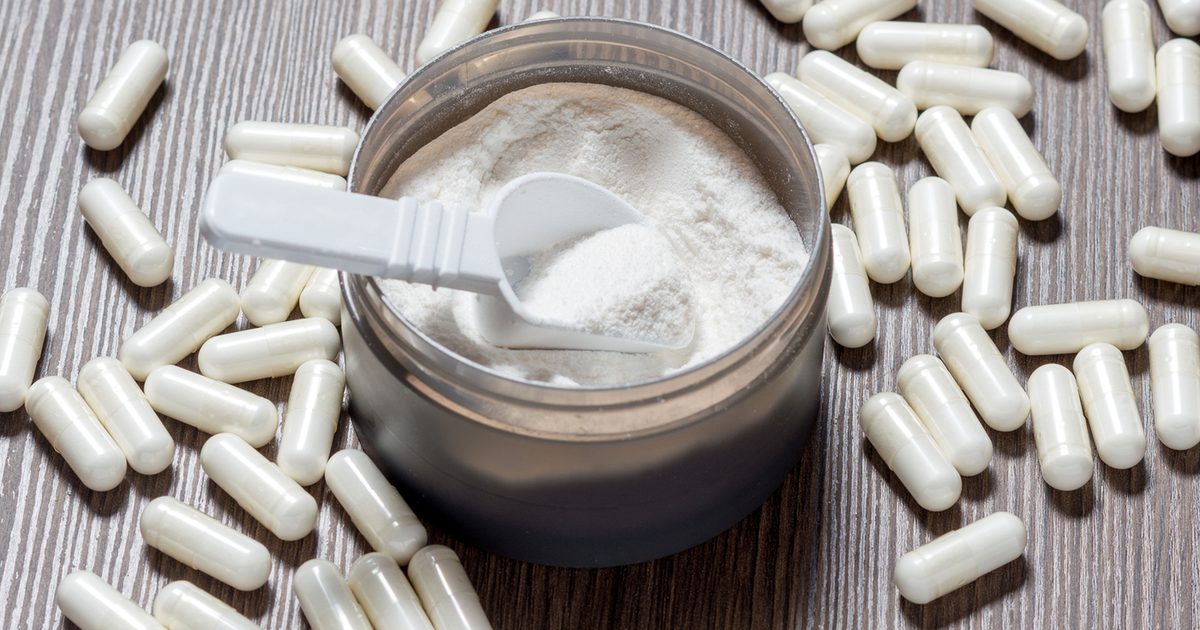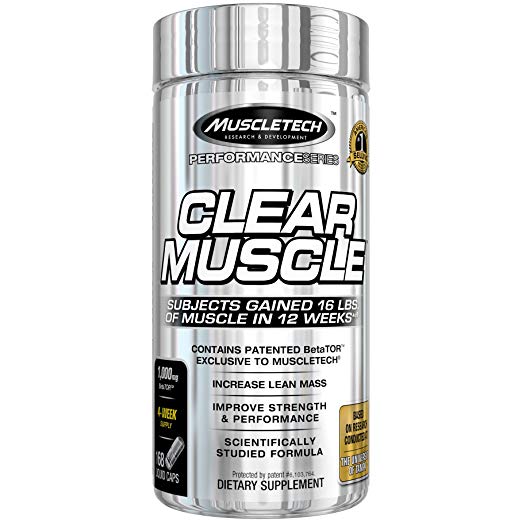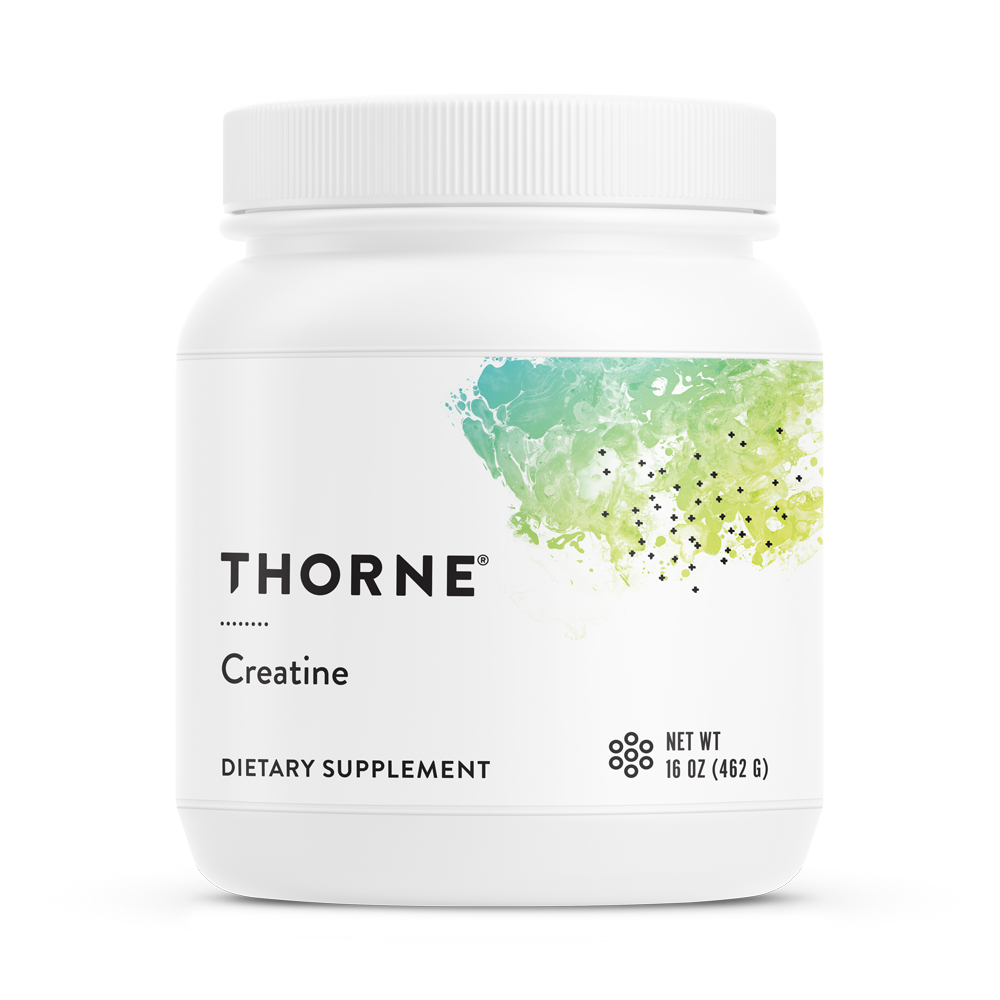Listen on: Apple Podcasts | Spotify
Amidst all the supplements that are just marketing hype, are there some that actually help you build muscle? What is the best muscle-building, strength-supporting supplement?
The supplement industry is filled with bunk products, empty promises, and companies hoping to find the next sucker looking for a shortcut. Inevitably, those products get called out by the media, causing people to question the credibility of all supplement companies. The great brands are guilty by association.
For the average person, it’s hard to discern quality from crap, especially when it comes to supplements to support muscle growth, so I’ve singled out the four best supplements for building muscle, based on research and experience to date.
Before we get to them, I need to stress two points:
- There’s no short-cut for consistently following an intense strength training program (like VIGOR Training), eating plenty of protein, and getting sufficient sleep. Don’t expect any of these supplements to make a difference if you don’t have those ducks in a row.
- The recommendations, and “how to use” sections are not intended to suggest or recommend the diagnosis, treatment, cure, or prevention of any disease, nor to substitute for medical treatment, nor to be an alternative to medical advice. The statements below have not been evaluated by the Food and Drug Administration. The use of the suggestions and recommendations are for educational purposes only.
Read also: How to Gain Muscle Without Gaining Fat.
Beta-Hydroxy-Beta-Methylbutyrate (HMB)
In my opinion, HMB doesn’t get talked about nearly enough. It enhances recovery from resistance training, most likely by revving up muscle tissue regeneration.
Beta-hydroxy-beta-methylbutyrate (HMB) is a metabolite of the branched-chain amino acid leucine.
Leucine, one of the three branched-chain amino acids, stimulates protein synthesis, or muscle growth. Your ability to build muscle depends on increasing protein synthesis and decreasing protein breakdown. They sound like the same thing, but they are not.
In addition to stimulating protein synthesis, at very high doses, leucine decreases protein breakdown, also known as proteolysis. Unfortunately, the dose needed to reduce protein breakdown is so high that it wouldn’t be practical to supplement with leucine for that purpose.
However, researchers found that HMB could reduce protein breakdown like leucine, but at a much smaller dose.
an individual would need to consume over 600 g of high quality protein to obtain the amount of leucine (60 grams) necessary to produce the typical 3 g daily dosage of HMB used in human studies
Wilson, et al. 2013
Multiple studies have shown HMB enhances exercise recovery and improves lean body mass, strength, power, and aerobic performance.
Two forms of HMB are available, the calcium salt form, or HMB-Ca, and the free acid form, or HMB-FA.
To date, most of the research on HMB is based on HMB-Ca. However, a newer form of HMB called HMB free acid, or HMB-FA, may get absorbed and utilized better than the calcium salt version. More research is needed yet.
Personal note: I used the free acid form for about five weeks and found that it bothered my stomach too much, so I went back to the calcium salt version of HMB.
HMB, like all of the supplements in this article, has a strong safety record. Even at doses equivalent to 50 grams per day in adults, researchers saw no side effects in animals. That’s more than 12 times the standard dose used for supporting gains in lean body mass!
Because HMB slows muscle tissue breakdown, it could be especially helpful for those on a fat loss or calorie-reduced diet, where muscle tissue loss is typical.
For HMB to be effective in supporting muscle growth, your resistance training must be intense enough to cause significant muscle tissue damage. For those who are new to exercise, that’s pretty easy to do. The adaptation phase to exercise often causes much muscle damage and soreness.
For those who’ve been training for years, it gets more challenging to create a training stimulus strong enough to cause the kind of tissue damage where HMB is most effective.
If you half-ass your workouts, HMB won’t have much of an effect. If you train hard or you’re approaching an overreaching state, or peaking for a competition, HMB could be a great supplement to add to your program.
Other Benefits of HMB
Some research shows HMB can enhance aerobic exercise performance, increases protein synthesis, and might also increase growth hormone secretion.
Research shows it supports the maintenance of lean body mass with aging. HMB supplementation improved strength and muscle quality in older adults, even without resistance training. Of course, the results are further enhanced in older adults who add resistance training to their lifestyle.
HMB supplementation could be a safe and effective way to help retain lean body mass in catabolic diseases like cancer, where cachexia (rapid muscle loss related to cancer) is common, or even in later stages of aging where adults deal with sarcopenia.
How To Use HMB
Most studies use 3 grams as a standard dose for HMB. Again, for muscle-building, your training needs to be pretty intense.
- Minimum of 3 grams per day.
- On training days, take daily dose an hour before exercise. On non-training days, split the dose and take at two different times.
- HMB is more effective with extended use, so be consistent for at least three weeks before expecting results
Beta-Alanine
Beta-alanine is an amino acid and a precursor to carnosine. The more beta-alanine you have, the more carnosine you make.
Carnosine is found in muscle and brain tissue. In muscle tissue, carnosine buffers hydrogen ions, helping to maintain muscle pH levels.
Accumulation of hydrogen ions causes “the burn” during resistance training, climbing the stairs, or other short-term anaerobic activity. By slowing the buildup of hydrogen ions, carnosine helps you do more work before reaching fatigue. Greater training volume leads to accelerated strength and muscle growth.
Carnosine also combats advanced glycation end products (AGEs), which contribute to the development of diabetes, atherosclerosis, Alzheimer’s, and other degenerative diseases.
You get most of your dietary beta-alanine and carnosine from animal protein, like meat, fish, and poultry. So, it’s no surprise that vegetarians and vegans usually have much lower carnosine concentrations in their tissues (one of many reasons I don’t encourage vegetarian or vegan diets).
You might wonder, “If higher levels of carnosine are so valuable, why not just supplement with carnosine instead of beta-alanine?”
Ingestion of beta-alanine easily reaches your muscle tissue, whereas much of your dietary carnosine is broken down before gets to your muscle.
Carnosinase, the enzyme that breaks down carnosine is found in the blood and other tissues, but not found in muscle tissue. On the trip from your mouth to your muscle, much of your dietary carnosine breaks down, whereas beta-alanine makes it to your muscle tissue. Once beta-alanine is inside your muscle tissue, it helps raise carnosine concentrations.
Doses of four to six grams per day of beta-alanine have been shown to increase carnosine levels by 64% after four weeks, and up to 80% after ten weeks. Vegetarians and vegans have a more significant response to beta-alanine than those who eat plenty of animal protein.
In the context of higher time-under-tension training, where the development of acidosis (the burning sensation) causes fatigue, combining beta-alanine with sodium bicarbonate (baking soda) may further improve performance. In research, the sodium bicarbonate dosage was 0.5 g/kg/day for seven days. If you try using sodium bicarbonate, increase your dosage slowly as it can create digestive distress.
The last thing you want is to get hit with diarrhea in the middle of a set of deadlifts.
Combining creatine and beta-alanine may also have a modest synergistic effect.
Other Benefits of Beta-Alanine
Research shows beta-alanine may improve aerobic exercise performance and may reduce neuromuscular fatigue during exercise.
The effect of beta-alanine is stronger in older adults and those on a vegetarian or vegan diet.
In military personnel, beta-alanine improved cognitive function, peak power, and marksmanship.
Beta-alanine is a very safe supplement. The only potential side effect is a tingling sensation similar to a niacin rush. However, you can minimize the tingling by using sustained-release beta-alanine.
Performance improvements from beta-alanine would be most noticeable in those who’ve already pushed their physical limits with strength training and nutrition. You probably wouldn’t notice much benefit in lower-rep, higher-load, strength-based training. Instead, beta-alanine supplementation would be most effective with hypertrophy, metabolic conditioning, or muscular endurance training parameters.
Read also: 7 Body and Mind Benefits of Building Muscle.
How To Use Beta-Alanine
I recommend using sustained-release beta-alanine, as it may improve retention in muscle tissue, and allows you to take a higher dose without experiencing the tingling sensation common with regular beta-alanine.
- During the first 28 days, take a minimum total of 90 grams, or 3.2 grams per day. 6.4 grams may produce better results.
- Follow the loading phase, use a maintenance dose of 3.2 to 4.8 grams per day.
- Divide daily intake over 2-3 doses. On training days, use one dose ~45 minutes before exercise and another following your training session.
- Taking with food has been shown to increase muscle carnosine levels further
- Performance improvements are noticeable after 4-8 weeks
Thorne Beta-Alanine
Beta Alanine-SR supports muscle capacity and fights muscle fatigue to benefit athletic performance.* PureTab™ sustained-release technology provides long-lasting benefits while minimizing side effects.* NSF Certified for Sport®
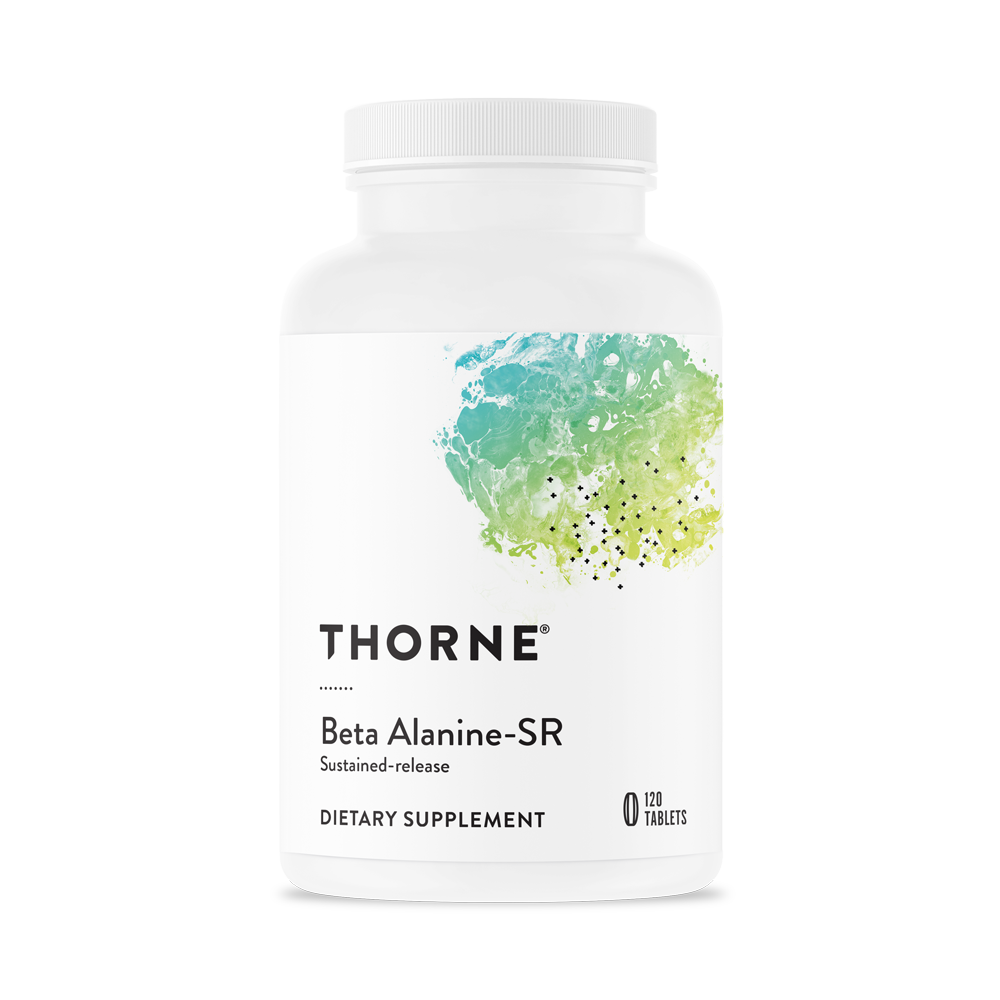
Essential Amino Acids / Branched-Chain Amino Acids
Dietary protein is critical for building muscle.
It doesn’t matter how good your training program is, or how much sleep you get. If you don’t get enough protein, you’ll end up short on amino acids for building muscle. It would be like trying to build a brick house without enough bricks. It wouldn’t matter how amazing your contractor is; without enough material to build the house he wouldn’t be able to finish the job. Think of amino acids as those bricks.
While most of your amino acids will come from food, you can also take free form amino acids as a supplement. The benefit is that there’s no need to digest them. As soon as they hit your digestive system, they get absorbed and start working their magic.
You have nine essential amino acids: histidine, isoleucine, leucine, lysine, methionine, phenylalanine, threonine, tryptophan, and valine.
Three of the nine, leucine, isoleucine, and valine are called branched-chain amino acids (BCAAs). The branched-chain amino acids have a significant effect on muscle protein synthesis.
Amino acids support muscle growth, but you also use some amino acids for energy. By supplementing with amino acids during exercise, you may use them as an energy source rather than your body breaking down muscle tissue to supply its amino acid needs.
Although you could technically get all the essential amino acids you need from food alone, your appetite prohibits you from eating so much. High-protein diets are very satiating, after all.
So, the benefit of using amino acids, especially BCAAs is that you can consume them without feeling full afterward.
During intense training sessions, amino acid supplementation can improve exercise performance, helping you do more volume, as well as speed up the recovery process.
To maximally stimulate protein synthesis, you need 5-8 grams in a single dose. Most of the research shows that the best results occur when the leucine:isoleucine:valine ratio is 2:1:1, which is the same ratio they occur in muscle tissue.
Other Benefits of Amino Acids
Supplementation with essential amino acids isn’t just for sports performance.
They can be used to support recovery from injury or physical trauma, maintenance of muscle during bed rest or limb immobilization, maintenance of lean mass during fat loss and calorie-restriction, and to enhance cognitive function and good mood.
Older adults deal with “anabolic resistance” where they have less of an effect from protein and amino acids. To support the maintenance of lean mass, they need to eat more protein or ingest more amino acids than younger adults do, making amino acid supplementation a convenient solution.
Interestingly, research shows amino acid supplementation may also help support the recovery of damaged heart tissue after cardiovascular events, or slow the effects of cachexia or sarcopenia.
Read more: What You Need To Know About Amino Acids.
How To Use Branched-Chain Amino Acids
To support maximal muscle growth:
- Consume 5-8 grams of BCAAs during and/or immediately after intense weight training sessions.
- To further support lean body mass, you can take additional doses between meals
- Your total BCAA intake does count toward your total protein intake if you’re tracking protein
Young Living AminoWise
AminoWise contains the BCAAs in their optimal ratio, and also includes glutamine, beta-alanine, essential oils, and other nutrients to support recovery. This amino acid formula is one of a kind!
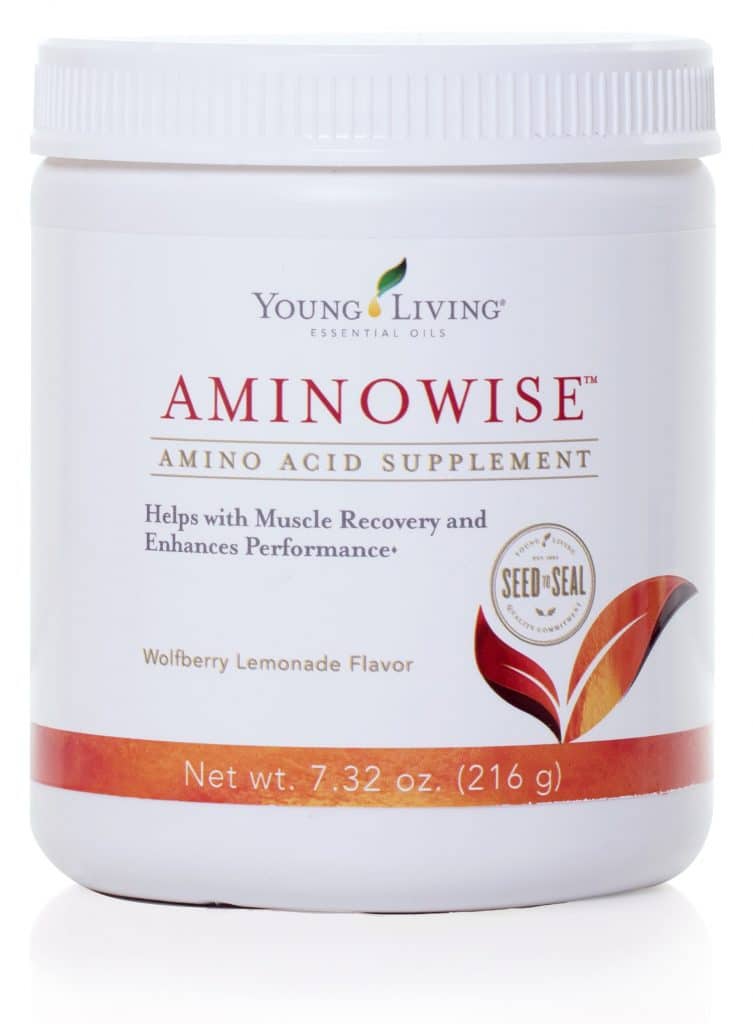
Creatine Monohydrate
Creatine is the most-studied, most-proven sports performance supplement on the planet. The fact that it’s old news often causes people to overlook this simple and powerful supplement.
Creatine has a direct effect on your muscle’s ability to produce the energy needed for muscle contraction.
You derive energy from the breakdown of adenosine triphosphate (ATP) to adenosine diphosphate and inorganic phosphate.
The more energy you need, the more ATP you break down to ADP. To continue muscle contraction, you need ATP, so as your ATP supply decreases, so does your ability to carry on physical activity.
Unfortunately, you can’t just jam those extra phosphates back onto ADP to make ATP. That’s where creatine comes in. Creatine bonds to the phosphate, and brings it to the ADP where it can be rebuilt to ATP again.
The more creatine phosphate you have available, the faster you can rebuild ATP and continue muscle contraction.
You do get some creatine in your diet if you eat meat and fish. A pound of either one has about one to two grams of creatine.
In regards to muscle-building, creatine allows you to lift more weight, or do more repetitions with the same weight. That physical stress drives muscle growth.
A 2003 meta-analysis showed that creatine supplementation increased one-rep max (1RM) by an average of 8%, and endurance strength (maximum reps at a given percentage of 1RM) by 14%.
Nerd alert: The most recent findings suggest the effects of creatine supplementation “may be due to satellite cell proliferation, myogenic transcription factors and insulin-like growth factor-1 (IGF-1) signaling.” (Cooper, et al.)
Creatine also increases fluid retention in the muscle cells, which can cause some weight gain, but it’s not actual muscle growth. The increased fluid may act to increase the leverage of your muscles on their joints, further increasing your strength. Of course, this fluid retention goes away shortly after discontinuing use.
Interestingly, creatine seems to blunt the rise in inflammation following exercise as well. It’s possible that less inflammation may lead to faster recovery, but that remains to be seen.
Though there are many other forms of creatine on the market, surrounded with fancy marketing messages, creatine monohydrate, the original form, still stands out as the best form of creatine.
And in case you think you can eat more meat and fish to get your creatine, you’d need to eat 2.5 to 5 pounds of meat per day to meet your 5-gram maintenance dose, and 10 to 20 pounds per day during the loading phase. That’s as much meat as a wild lion eats. I know you want to have VIGOR, but that’s flat out impractical.
Other Benefits of Creatine
Creatine may be helpful following an injury or surgery, as it has been shown to slow the loss of strength and muscle mass and lower markers of tissue damage. Whether you got hurt and couldn’t get out of bed, or just injured one limb and could continue training with the others, creatine may support faster recovery.
Because the brain is the other tissue where you find creatine, it’s no surprise that creatine supplementation may enhance cognitive function, especially in older adults or in those with sleep deprivation.
One other intriguing finding is in women with major depressive disorder (MDD). In one study, those who supplemented with five grams of creatine in addition to their antidepressant medication responded to treatment twice as fast as the medication alone. The mechanism still needs to be determined.
How To Use Creatine Monohydrate
The following is the time and research-tested way using creatine for building lean body mass and strength.
- Loading Phase (7 days): 5 grams, four times per day
- Maintenance Phase: 5 grams per day, taken pre or post-workout on training days, and at any time on non-training days.
Read more: Creatine: Health, Fitness, Performance Benefits.
What About Other Supplements?
The supplements I chose to highlight in this article have a direct effect on your performance in your training sessions and/or the rate you build muscle during the recovery period afterward.
Are there other supplements that could help as well? Of course.
You indirectly affect muscle growth by improving the quality of your sleep, supporting optimal testosterone or growth hormone levels, enhancing the digestion and absorption of your food, and other biohacks as well.
One thing I do NOT recommend is a pre-workout stimulant. It might help improve your performance for a few days, but as you adapt, you need more for the same feeling, and over time, the stimulants can start messing with your sleep schedule and your energy throughout the day. Black coffee is good, but avoid the high-caffeine energy drinks, or limit them to no more than once a week.
Of course, all of these recommendations come with the assumption you’re already taking your “Foundational Five.”
Train hard, and remember this quote:
No supplement is so good that it can undo the effects of a lousy diet. No diet is so good that you can’t benefit from supplementation.
